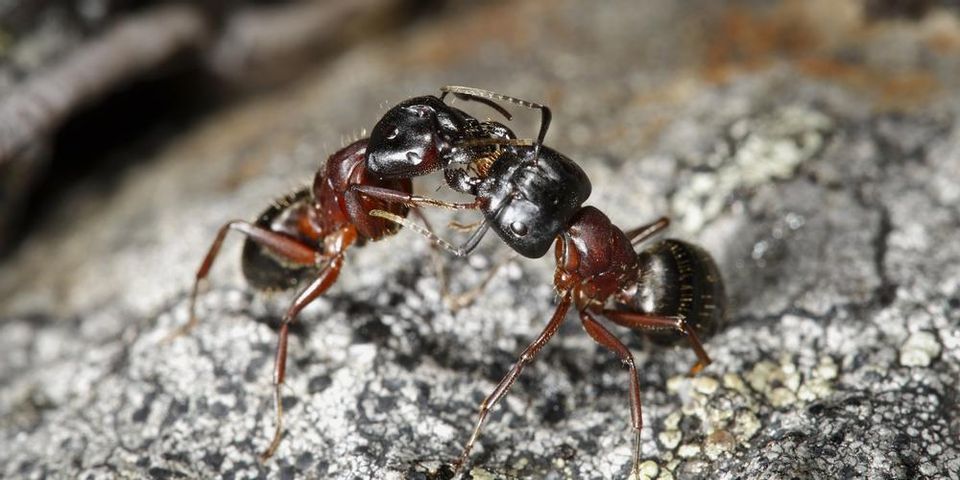Local Pest Control Company Explains How to Prevent Carpenter Ants in the Winter

The idea of having carpenter ants around is a scary thought for many homeowners, but these pests are quite familiar to pest control companies. They are between ¼ and ½ inches long and come in a variety of different colors, including red, black, gray and yellow. These large ants dig out wood to build their nests and can cause a lot of damage in a home. These nests can be found in chimneys, windows, door frames and other areas with decaying wood.
During the winter, carpenter ants like to hide out inside people’s homes to stay out of the cold, and when spring rolls around, they will begin laying more eggs and increasing their colonies. Fortunately, it is possible to stop these critters in their tracks. The following are several ways to prevent carpenter ants in the winter.
Don’t Leave Food Out
 Like many other insects, carpenter ants will eat just about anything they can get a hold of. That’s why it’s important to seal all food items in tight containers and never leave dirty dishes in the sink. If there is sauce, jelly or other food residue on the counter, wipe it off immediately.
Like many other insects, carpenter ants will eat just about anything they can get a hold of. That’s why it’s important to seal all food items in tight containers and never leave dirty dishes in the sink. If there is sauce, jelly or other food residue on the counter, wipe it off immediately.
Seal Cracks
Periodically check for cracks between doorways and windows. Ants can make their way into your home through these cracks, so seal them with caulk right away.
Trim Tree Branches
If there are tree branches hanging near your house, you should trim them regularly. Carpenter ants can make their way into your home through these branches.
Correct Moisture Problems
Carpenter ants are attracted to moisture around bathtubs, doors, pipes, windows, roof vents and other areas. If there is a leaky pipe or other moisture problem in your house, get it fixed. Otherwise, you may have to contact a pest control company to help you get rid of the ants.
Following these tips can help you keep these pesky critters out of your house. If you need additional assistance, contact the experts at Denning Pest Control company in Jefferson City, MO. The company has been around for more than 60 years and treats termites, bedbugs, and other pests. For more information, visit their website.
About the Business
Have a question? Ask the experts!
Send your question

